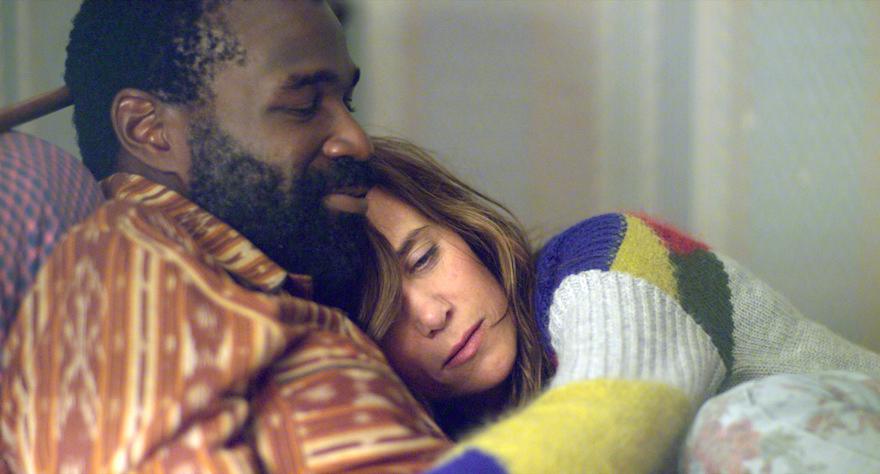
A meditation on the universal balance of creation and destruction is undermined by an inconceivable third act.

A meditation on the universal balance of creation and destruction is undermined by an inconceivable third act.
On my list of Saturday Night Live‘s greatest alum, Kristen Wiig is quickly climbing the charts. Of course her terrific work on the show is a key part of that, but it’s what Wiig has done outside of the show, especially since leaving, that puts her in a special place. Like other SNLers who traded TV for movies (Will Ferrell, Mike Myers, Adam Sandler, Eddie Murphy), Wiig has found great success in her comedy comfort zone. She starred in the hugely successful Bridesmaids, a film that not only ranks as the highest-grossing SNL alum debut, it also earned Wiig a Best Original Screenplay Oscar nomination (with co-writer Annie Mumolo). But rather than wallow in a familiar well until it runs dry (like those aforementioned alum), Wiig has taken a much quirkier career path. A quick glimpse at her resume shows strong work in indie darlings like The Skeleton Twins and Diary of a Teenage Girl, as well as riskier choices in more offbeat offerings like Hateship Loveship and Welcome to Me. Her latest film falls into that risky, offbeat category.
In writer/director Sebastián Silva‘s Nasty Baby, Wiig stars as Polly, a woman trying to have a baby with her gay best friend, multi-media artist Freddy (Silva, also starring). After months of failure, testing shows Freddy’s sperm count to be low. With some persuading, Freddy’s boyfriend, Mo (Tunde Adebimpe), agrees to donate his sperm to the cause. Meanwhile, tension mounts in the trio’s New York City neighborhood as the behavior of an unhinged neighbor, a man who calls himself The Bishop (Reg E. Cathey), grows more and more confrontational, even becoming dangerous. His behavior escalates from annoying early-morning leaf-blowing sessions to vicious homophobic verbal assaults lobbed at Freddy. This ever-growing rift comes to threaten Freddy’s world.
Early on, Nasty Baby is a charming film about three characters who defy conventionality. Two minorities, in a same-sex relationship, are attempting surrogate pregnancy with a woman who, by all accounts, will be a part of the child’s life. That would be one baby with three parents, none of whom fit what society has come to expect as the traditional parental mold. And yet filmmaker Silva, along with his cast, make this arrangement feel incredibly natural, even familiar. There’s never a doubt this arrangement is insincere, nor is there any notion it might fail, post-baby. The charisma and chemistry among the leads solves that and is the film’s great strength.
Beneath the surface of this pleasantly offbeat story, the film wants to be a meditation on the universal balance of creation and destruction. Mo is a horticulturist by hobby but a woodworker by trade. Creation/destruction. When Mo is donating his sperm at the medical clinic where Polly is a nurse, she suddenly can’t chat with him because a battered woman comes in (one Polly knows from previous abusive incidents) and requires immediate attention. Creation/destruction. When Freddy and Polly travel to meet Mo’s family, tension is created by a few of Mo’s narrow-minded family members. Mo, Freddy and Polly are trying to do something borne of love while others judge them based on intolerance. Creation/destruction.
Then the third act comes in and irreparably damages the film. Don’t worry, no spoilers ahead.
Three key events that occur in succession in the third act are designed and presented in such a way as to be collectively considered inconceivable. The first event, involving Freddy’s art, is believable, but only to a point; beyond that, the eyebrow cocks. The second event, involving circumstances related to Polly’s attempted pregnancy, betrays the very character she has been to that point; something about the film now seems amiss. As for the third and final event, it is so far removed from anything remotely rational, the viewer is left wondering if what is being presented is a reel from an entirely different film, or maybe some form of catharsis for Silva. Either way, what should have been the “final conflict and resolution” is instead so tonally foreign, it renders the first two acts mostly irrelevant.
Two things make this disappointing and frustrating. First is that the core of that third event—not its final design or execution, but the basic conflict and the general path to it—makes sense. (In fact, it’s almost predictable.) The execution, though, is stupefying. Related to that (and other than seeing a terrific effort taken out back and set on fire) is that the trio of events, despite the devil in the details, still work within the thematic construct of creation/destruction. Somehow Silva managed to hang onto his core theme even though he realized he couldn’t close, opting instead to jam the pedal to the floor and hope for the best.
The net is the worst possible result: not a bad effort made nor a great effort flawed, but a good effort wasted.
Thankfully Kristin Wiig’s cinematic selections aren’t wasted though. It might be a mixed bag from a qualitative perspective, but her choices have ranged from confident to bold, and Nasty Baby is no exception. Her next few films bring her back to her comedic comfort zone, but I’m already looking beyond those to see what unique and daring choices she’ll make in the future.